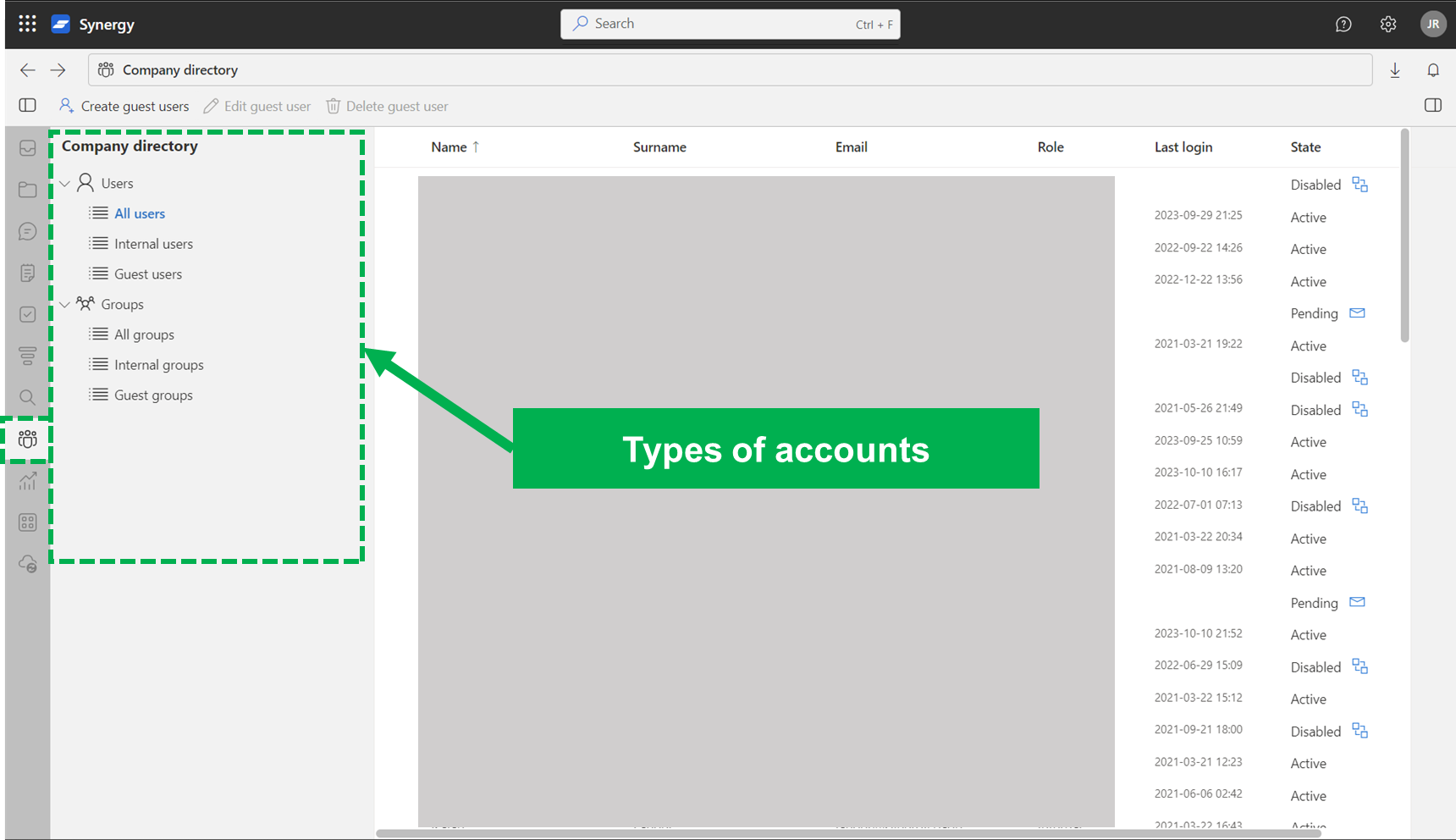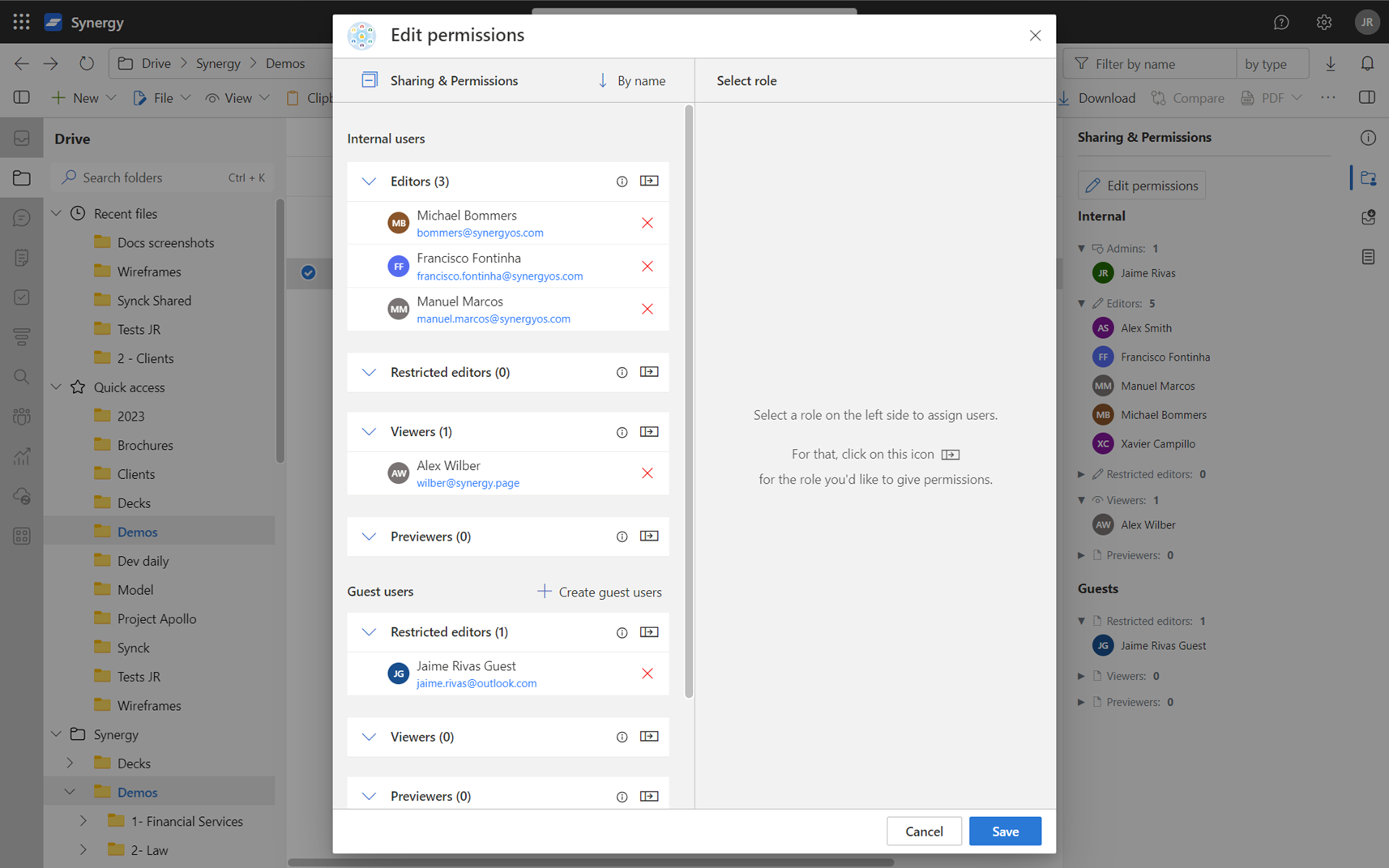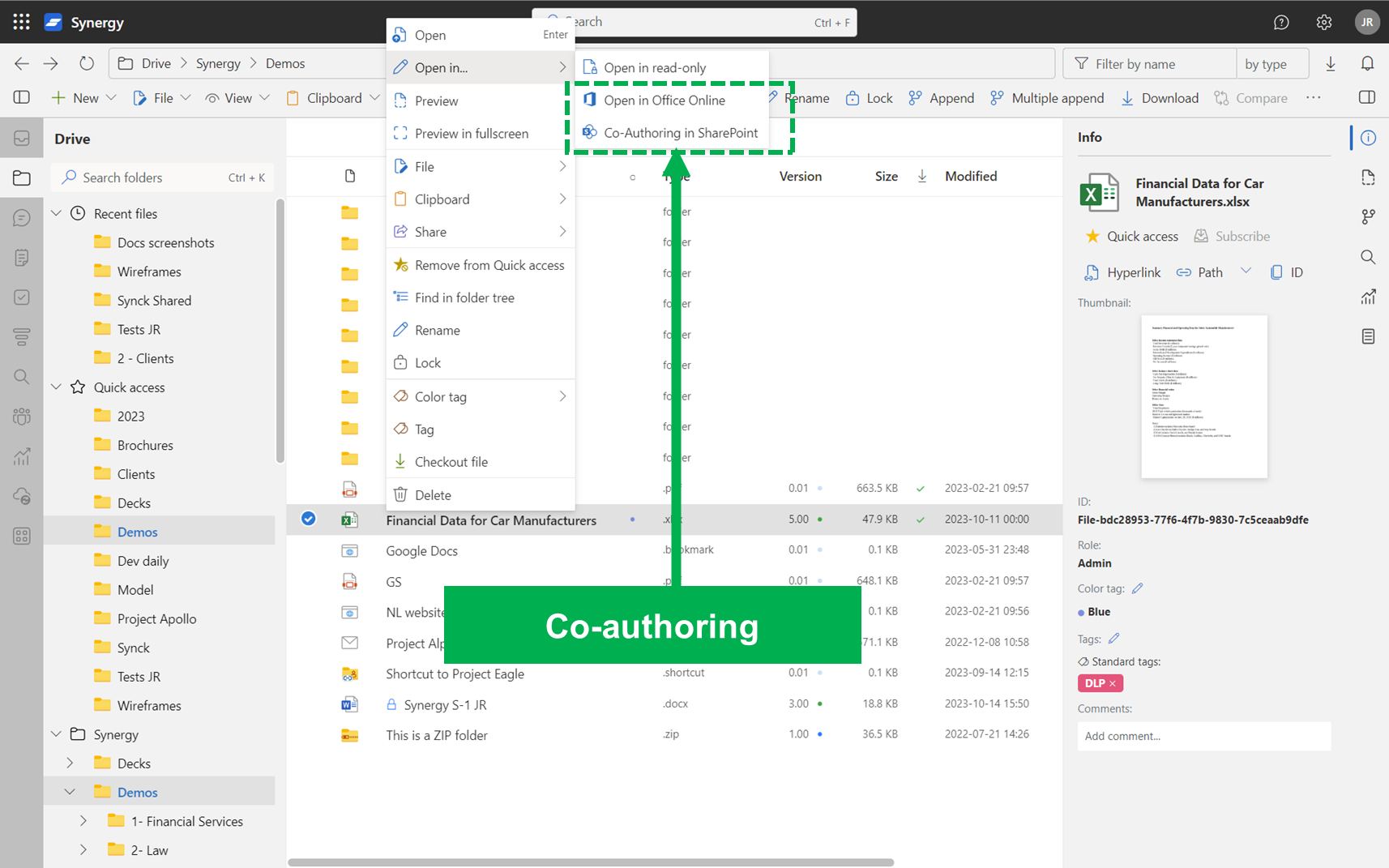Sharing & Permissions
Synergy is designed to make collaboration easy, both internally within your organization and externally with other people and companies.

Collaboration features are defined by company policy according to your company security and compliance requirements. For this reason, some of these features might not be available to you if they have been limited by your company administrators.
Types of accounts
A company repository can have distinct types of user accounts:

Internal accounts
- Admin user: administrator accounts which have access to all files and folders in the repository and to the Admin Center
- Internal user: the user accounts created and managed by your company administrators
- Guests user: people from other companies/domains that you want to give internal access
External accounts
- External user: external individual users or users from other companies repositories. These accounts are managed by the other company server and information is synced between both servers. This feature is in beta and not available at this time.
Internal and external accounts can have different roles assigned to them.
Internal accounts
Internal users are user accounts created and managed by your company administrators in your company Admin Center. Any internal user can view the list of all internal and guest users in a company repository from the Sharing Tab in the root of the repository:
You can give permissions to internal users by inviting them to a folder when they need persistent permissions and access to the content. By default, new internal users have no permissions at all so when they log in they will se an empty repository.
After creating a new internal user in the Admin Center, company administrators or any other internal users can give them access to:
- The root folder
The root folder provides the maximum permission level. When a root folder administrator invites a user to the root, they will be able to see all the children folders, expect private folders.
- Specific folders
When you are invited to a folder, you will be able to see the tree structure from the root folder to the folder you have been invited, but you will not be able to see any content (files or folders) in the tree, only in the folder where you have been invited.
Permissions
User permissions are primarily given through folder permissions and they follow a waterfall inheritance mechanism where all sub-folders inherit the same permissions.

Roles
There are several default roles with associated permission levels for people within your organization. The list of available roles are defined by company policy so some of these roles might not be available to you.
Roles
- Editor: they can browse the folder and create and edit files, assign access and rights to others and use all other functions available
- Restricted editor: they are very similar to editors but but cannot provide permissions to others or attach nor download files in bulk
- Viewer: they can see files and folders that they have been given access to, view version history, make comparisons, and open files using desktop applications in read-only, attach individual files and print
- Previewers: they can only view files that they have been given access to in read-only mode online (not on desktop applications)
Paths links
Paths are links to items in SynergyOS. You can copy the path by selecting an item (like a file) and click on the copy path button. You can share this link with anyone in your organization, and if they have permissions to see that item, the link will open in SynergyOS.

There are different types of path links:
- Path: full URL. For example, this is a path: https://app.synergyos.com/path/File-65587b14-e561-4870-aba3-e27f06a92809
- Hyperlink: URL behind rich text. It is nicer to paste into emails or chars. For example, this is a path hyperlink: Example File. As you see, the hyperlink uses the same URL as link and the standard path
- Path edit-mode: full URL with a default action to edit the file. For example, this is a path: https://app.synergyos.com/path/File-65587b14-e561-4870-aba3-e27f06a92809/openToEdit
- Path read-only: full URL with a default action to open the file in read-only. For example, this is a path: https://app.synergyos.com/path/File-65587b14-e561-4870-aba3-e27f06a92809/openReadOnly
- ID: this is the unique identifier of an item. The recipient of the ID can use this in the search function to find the intended item
External accounts
External individual users or users from other companies repositories. These accounts are managed by the other company server and information is synced between both servers. This feature is in beta and not available at this time.
Microsoft Office co-authoring
SynergyOS supports real-time co-authoring of Word, PowerPoint, and Excel files in both Microsoft Office Online and with SharePoint. With Microsoft Office Co-authoring, multiple people (internal users or guests) can edit a single file simultaneously and all changes will be automatically saved back to SynergyOS as a draft version. When multiple people are editing a file, their names will appear in the upper right corner. Also, your collaborator's text cursor will appear in a unique color and their name will be displayed next to it.
To open a Microsoft Office file in co-authoring mode, you can:
- Select a file and click on Open with Office Online from the toolbar
- Select a file in Synergy Drive and right click on the file, then select Open with Office Online
